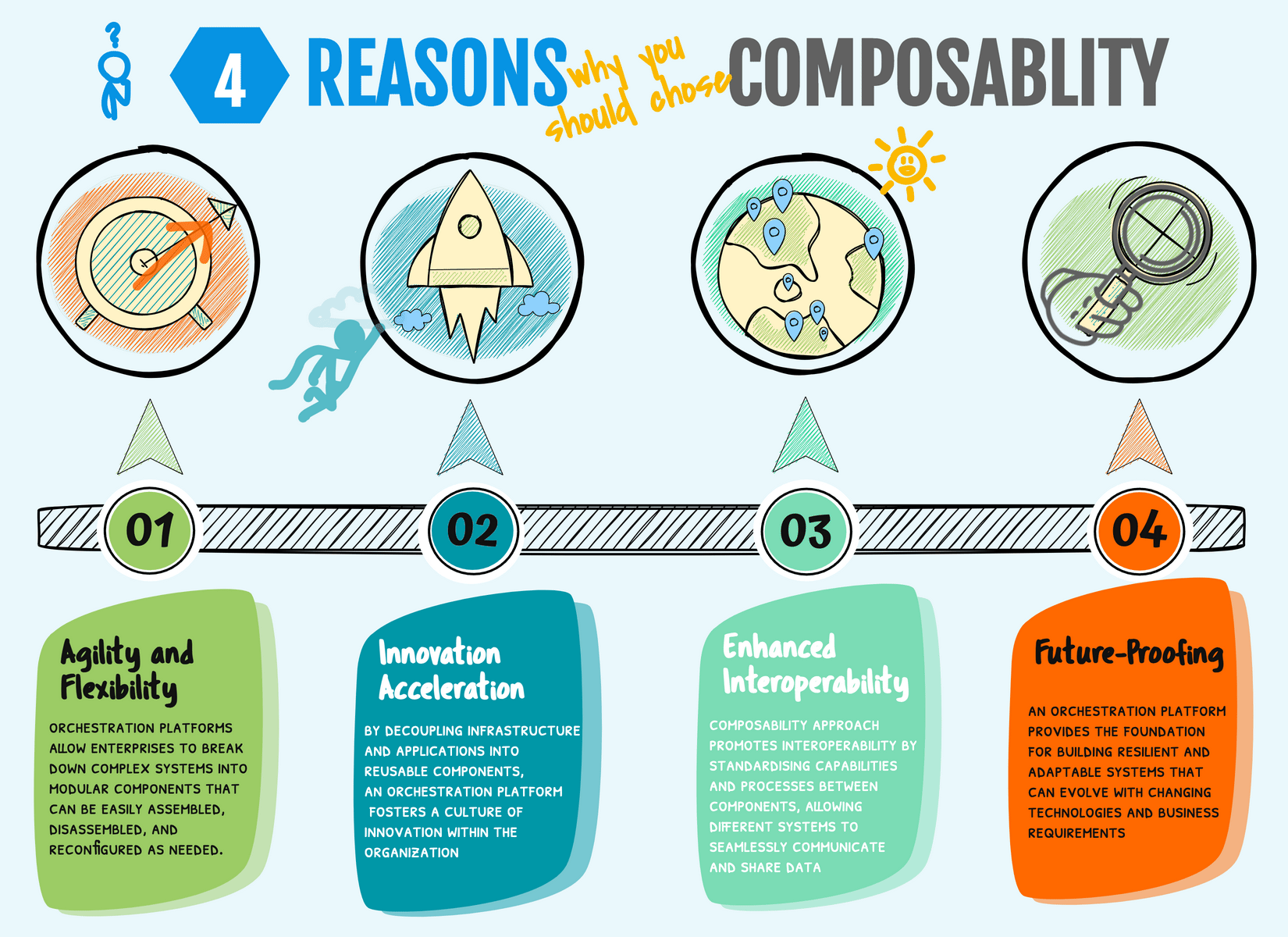In today’s fast-paced digital landscape, the only constant is change. Enterprises face a myriad of challenges in navigating this ever-evolving IT ecosystem, from emerging technologies to shifting market demands. Traditional monolithic IT infrastructures struggle to keep up with the pace of innovation, leading to inefficiencies, bottlenecks, and increased costs. However, there is a solution that is gaining traction for its ability to adapt and thrive in this dynamic environment: an Orchestration Platform.
Leveraging Composability, the approach of building systems from interchangeable components. Such platform offers a flexibility and scalability. A framework, that enables enterprises to rapidly respond to change.
Here are four reasons why orchestration is the key to success in handling the rapidly changing enterprise IT ecosystem, and how it impacts Finance, IT, Procurement, and Business Users.
1. Agility and Flexibility
Orchestration platforms allow enterprises to break down complex systems into modular components. Modules, that can be easily assembled, disassembled, and reconfigured as needed.
This agility enables IT departments to quickly adapt to changing business requirements, scale resources up or down dynamically, and deploy new services with minimal disruption.
Moreover, from a financial perspective, this means reduced costs associated with over provisioning and underutilisation of resources, as well as the ability to allocate budget more efficiently based on real-time needs.
2. Innovation Acceleration
By decoupling infrastructure and applications into reusable components, such a platform fosters a culture of innovation within the organisation.
IT teams can experiment with innovative technologies and frameworks without being constrained by legacy systems. This approach enables faster time-to-market for new products and services.
In addition, from a Procurement standpoint, this means greater flexibility in sourcing best-of-breed solutions from a diverse ecosystem of vendors, rather than being locked into single-vendor proprietary platforms.
3. Enhanced Interoperability
The Composability approach promotes interoperability by standardising capabilities and processes between components, allowing different systems to seamlessly communicate and share data. This interoperability is essential for integrating diverse applications and services across the enterprise, breaking down silos, and enabling cross-functional collaboration.
From a Business User standpoint, this means access to a unified and cohesive IT ecosystem that facilitates information sharing, decision-making, and process automation.
4. Future-proofing
In today’s rapidly evolving IT landscape, future-proofing is critical for long-term success. An Orchestration platform provides the foundation for building resilient and adaptable systems that can evolve with changing technologies and business requirements.
By abstracting away underlying complexities, enterprises can future-proof their IT investments and avoid costly and disruptive migrations or upgrades down the line.
In conclusion,
Orchestration platforms, like Olympe, offer a compelling solution for handling the rapidly changing enterprise IT landscape by providing agility, innovation, resource optimisation, interoperability, and future-proofing benefits.
From Finance to IT, Procurement, and Business Users, the impact of composability is profound. And Orchestration platform enables organisations to stay ahead of the curve in today’s dynamic business environment.
Embracing the Orchestration approach is not just a strategic imperative but a competitive advantage in the digital age.

Connect What You Have, Create What You Need – Now.
 April 22, 2024
April 22, 2024 